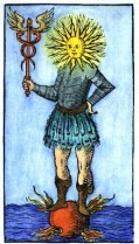I’ve been reading Hunter S. Thompson, for the first time. I’d never encountered the wild, destructive, creative force of this writer before. I’ve also been watching biographical movies about him, and of course the movie based on his book, Fear and Loathing in Las Vegas. The movie stars Johnny Depp and Benicio Del Toro.
It may seem curious for a depth psychologist to take an interest in the originator of “gonzo journalism,” especially since my interest is not to diagnose Thompson’s psychopathology. It would be easy to pin him down with a few diagnoses from the psychiatric Bible–the Diagnostic and Statistical Manual of Mental Disorders. Here is a man who suffered internally, a lot, took a lot out on those around him, indulged in consistently bad behavior, and made no apologies for his extensive alcohol and drug consumption. He would not be an easy therapy client, and as a matter of fact, he would likely never come for psychotherapy in the first place. In one of the interviews I watched, the interviewer asks about therapy and psychology. Thompson replies that he has no time for psychology; he is interested in politics.
His family and close associates give a picture of Thompson as both fiercely destructive and difficult, and keenly insightful and creative. It seems to me that his own personal madness may have given him a potent level of insight into the decadence of the society that he loved to rail against. In a poignant speech by his son Juan Thompson, in front of an audience in the author’s home town of Louisville, Kentucky, Juan says that his father taught him to see underneath the surface of things. It isn’t enough to go along with, for instance, the cover stories that we are told by the media and the government. You have to look for what is really true, even if it’s ugly and unpleasant.
I am reminded of a passage in the biblical book of Job. Job is a righteous man who’s done everything by the book. When his entire life is destroyed by tragic losses, he wonders how God could allow all this misfortune and chaos to happen. Job hadn’t done anything wrong. Towards the end of the book, God shows up and speaks to Job out of a whirlwind. At one point, God points to two wild and dangerous creatures that he’s created and says, in effect, check these two beasts out, Behemoth and Leviathan (traditionally believed to be the hippo and the crocodile). They are wild and powerful and beautiful. You can’t control them. They are fierce, and there’s nothing nice or pretty about them, but I made them. In fact, Behemoth is in some way the first of my creatures. In this passage, perhaps God is subtly revealing something of his own wildness to Job as well.
Who knows what this passage really means, but when encountering a wild force of a man, who broke all the rules, I am reminded of it. I can’t help but make the connection to psychology and its relation to wildness, or chaos. Psychology is no different from religion in that it tends to prefer the ordered, peaceful, well-behaved, and the safe. It will do what it can to enforce these values, with its diagnoses and its technologies of treatment.
Any therapy that lasts awhile is liable to encounter in some form the chaos that is part of living a human life. Not even the most sophisticated psychoanalytic theory and method will ever analyze away this element of the chaotic and uncontrollable. It’s a permanent fixture. Finding a way to relate to the Behemoth and Leviathan doesn’t come without great struggle. Destruction of self and other is all too easy to fall into. Yet for the psyche to be alive and in play, the individual has to forge some kind of creative relationship to chaos–one that gives the wildness a place in the work of individuation.
But enough, as Hunter might say, of my gibberish!

